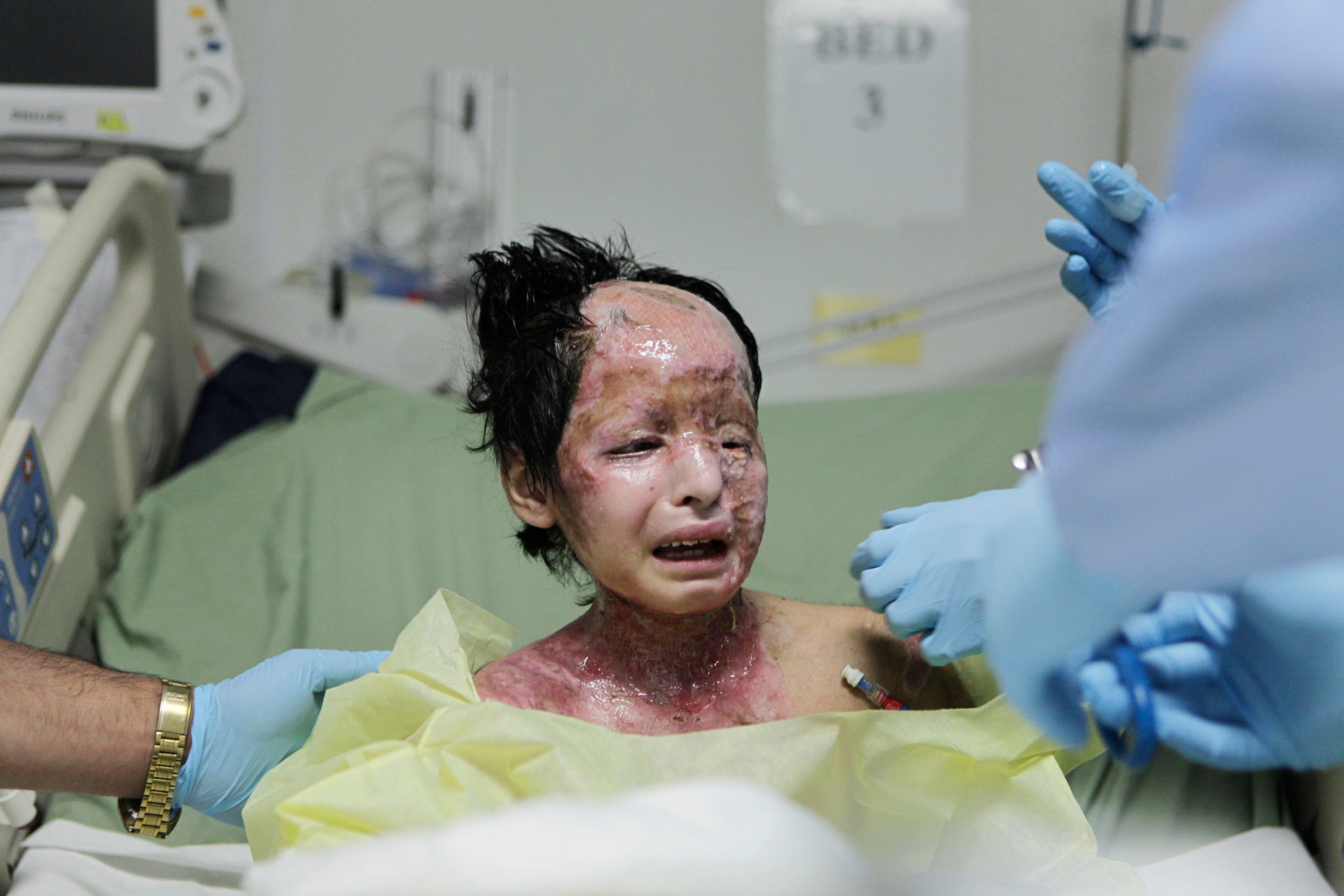Human toll of incendiary weapons documented in new report
A new report by Human Rights Watch and Harvard's human rights clinic has documented the use of incendiary weapons and their horrific human cost on civilians over the past decade in conflict zones like Afghanistan, the Gaza Strip and Syria

Your support helps us to tell the story
From reproductive rights to climate change to Big Tech, The Independent is on the ground when the story is developing. Whether it's investigating the financials of Elon Musk's pro-Trump PAC or producing our latest documentary, 'The A Word', which shines a light on the American women fighting for reproductive rights, we know how important it is to parse out the facts from the messaging.
At such a critical moment in US history, we need reporters on the ground. Your donation allows us to keep sending journalists to speak to both sides of the story.
The Independent is trusted by Americans across the entire political spectrum. And unlike many other quality news outlets, we choose not to lock Americans out of our reporting and analysis with paywalls. We believe quality journalism should be available to everyone, paid for by those who can afford it.
Your support makes all the difference.A new report released Monday documents the use of incendiary weapons and their horrific human cost on civilians over the past decade in conflict zones like Afghanistan, the Gaza Strip and Syria, with Human Rights Watch and Harvard’s human rights clinic calling on nations to close loopholes in international law and stigmatize their use.
The report says the weapons which may include white phosphorus, inflict excruciating burns and can lead to infection, shock and organ failure. Often, medics also do not have adequate resources in war zones to assist victims with serious burns.
White phosphorus burns until it’s gone. It can burn right down to the bone, leaving victims in chronic pain and with permanent disabilities and scarring.
The report by Human Rights Watch and Harvard Law School’s International Human Rights Clinic notes that burn victims sometimes need to be intubated in order for intensive wounds to be treated and dead skin scraped away. They may also require multiple surgeries and intense physical therapy to regain mobility.
In one incident detailed in the report, an 8-year-old Afghan girl named Razia sustained burns on up to 45% of her body from a white phosphorus attack outside of Kabul in 2009. Razia's family had just finished breakfast when two white phosphorus shells crashed into their mud-brick home in Afghanistan’s northeastern Kapisa province. Fire and smoke consumed the house, immediately killing two of Razia’s sisters as they slept side by side.
Razia was rushed to a local Afghan army base, which could do little to help. A car drove the family to a nearby French base, which also was unable to provide the needed medical assistance. A medivac helicopter eventually transported the young girl to a U.S.-run hospital at Bagram Air Base.
She ultimately survived with the help of extensive and painstaking medical care, but the report notes she lives with the emotional scar of losing two of her sisters and with the physical pain of excruciating burns over almost half her body. Although it's been 11 years since the attack, her father says she is embarrassed to be seen in public and is reluctant to leave the house.
U.S. and NATO troops used white phosphorus to illuminate targets in Afghanistan, but military officials said at the time they could not be certain whether it was their own round behind that attack.
That same year, Israeli forces launched artillery shells containing white phosphorus in the northern part of the besieged Gaza Strip during the 2009 war with Hamas. The Israeli shells smashed through the roof of the Abu Halima family home, where 14 members of the family, ranging in age from six months to 45 years old, were seeking refuge from the fighting.
Five died in the attack, burned alive in the fire caused by white phosphorus. Among those killed were three brothers, ages 14, 11 and 10. Other family members were seriously wounded.
As recently as 2013, Syrian government forces attacked a building near a school in northern Aleppo province. When students in Urum al-Kubra hurried outside to see what had happened, an incendiary bomb landed among a group of them, immediately killing five, with more dying later from their injuries.
The report said the ongoing human suffering caused by incendiary weapons underscores the need for stronger international law. It urged countries to take concrete action at next year’s conference on the Convention on Conventional Weapons to condemn and continue to raise awareness about the use and harm of such weapons, as well as to block loopholes in existing protocols.